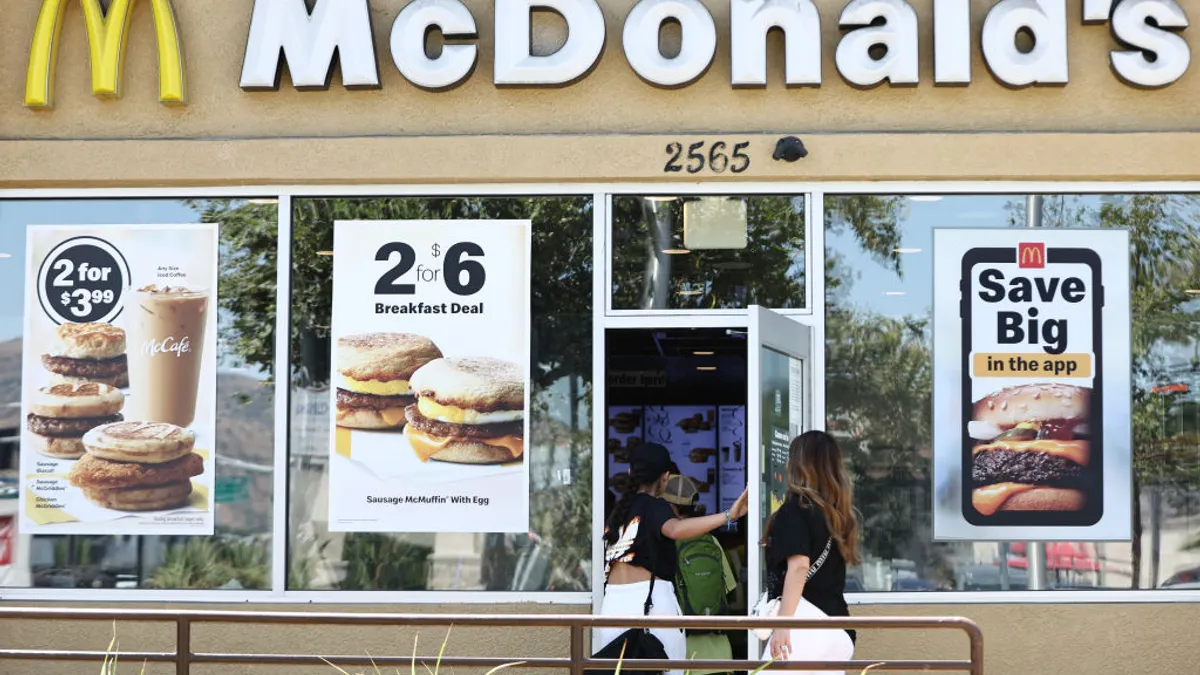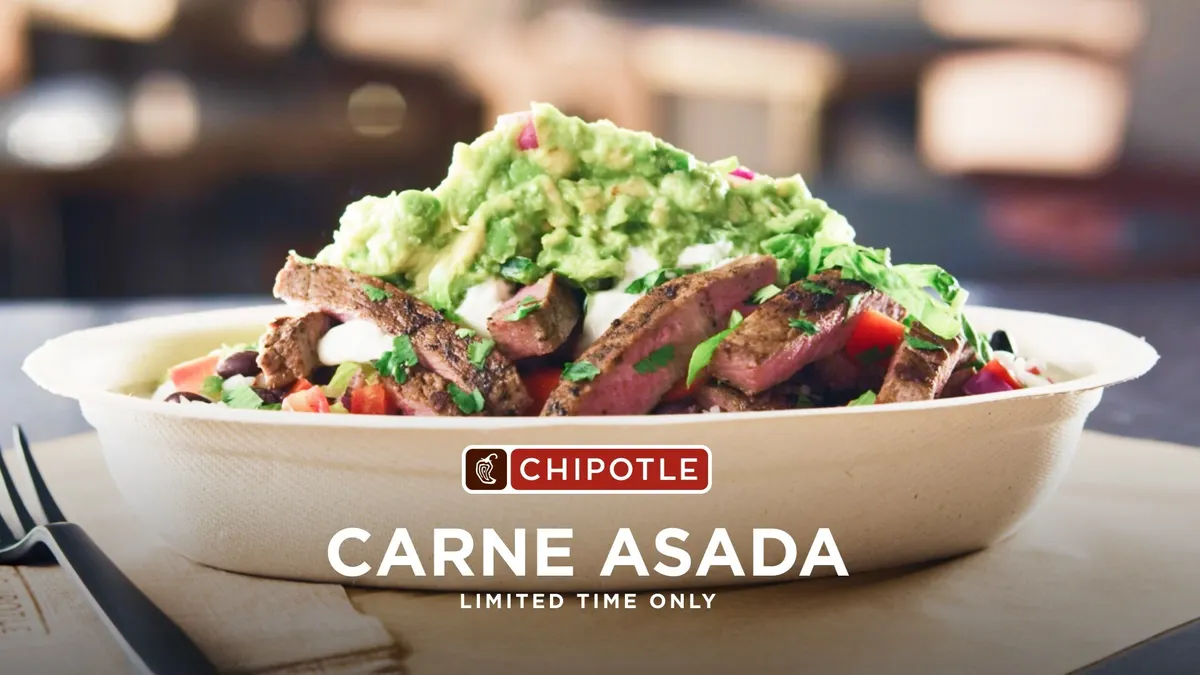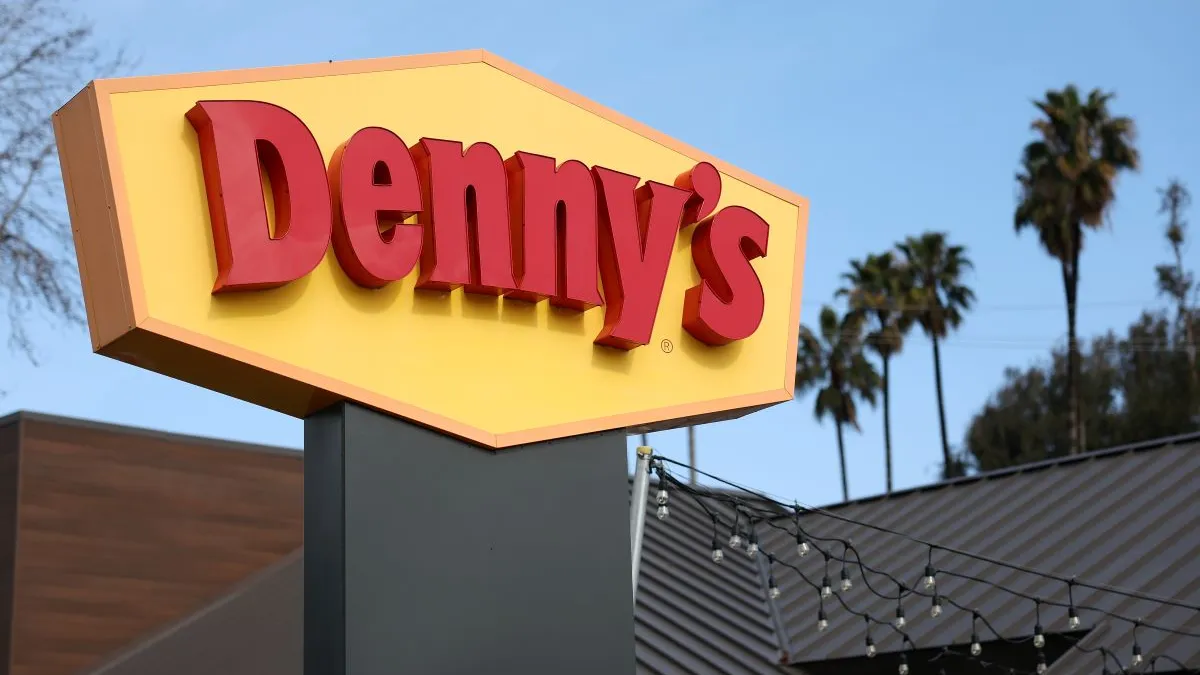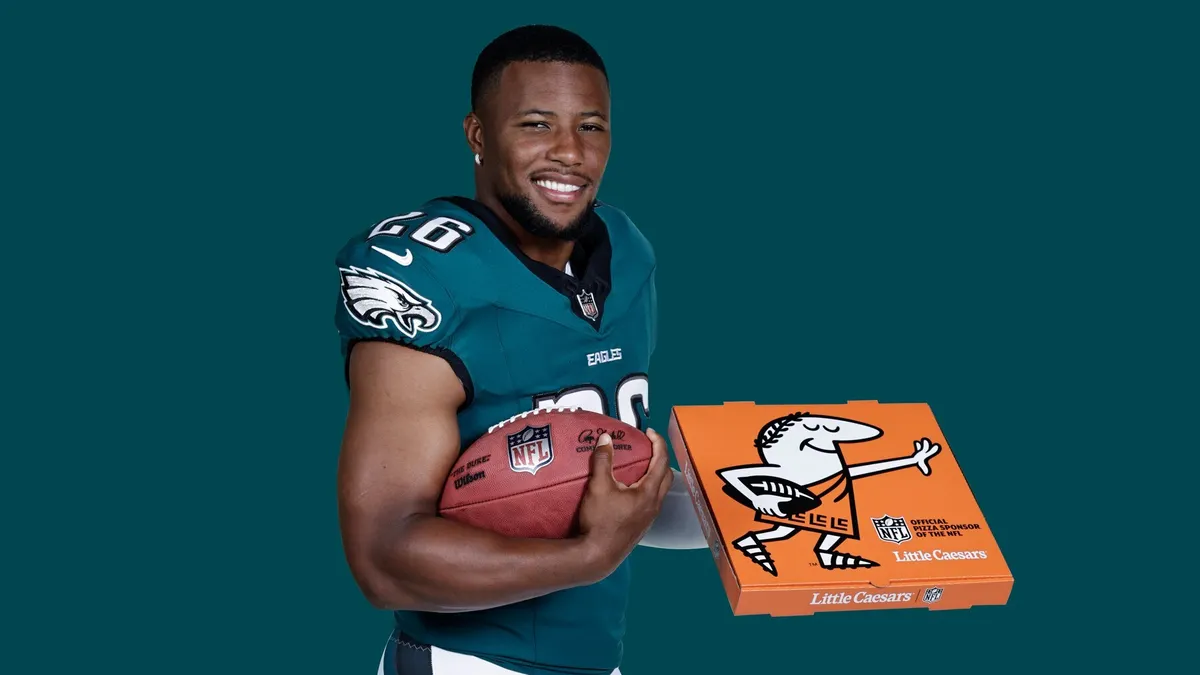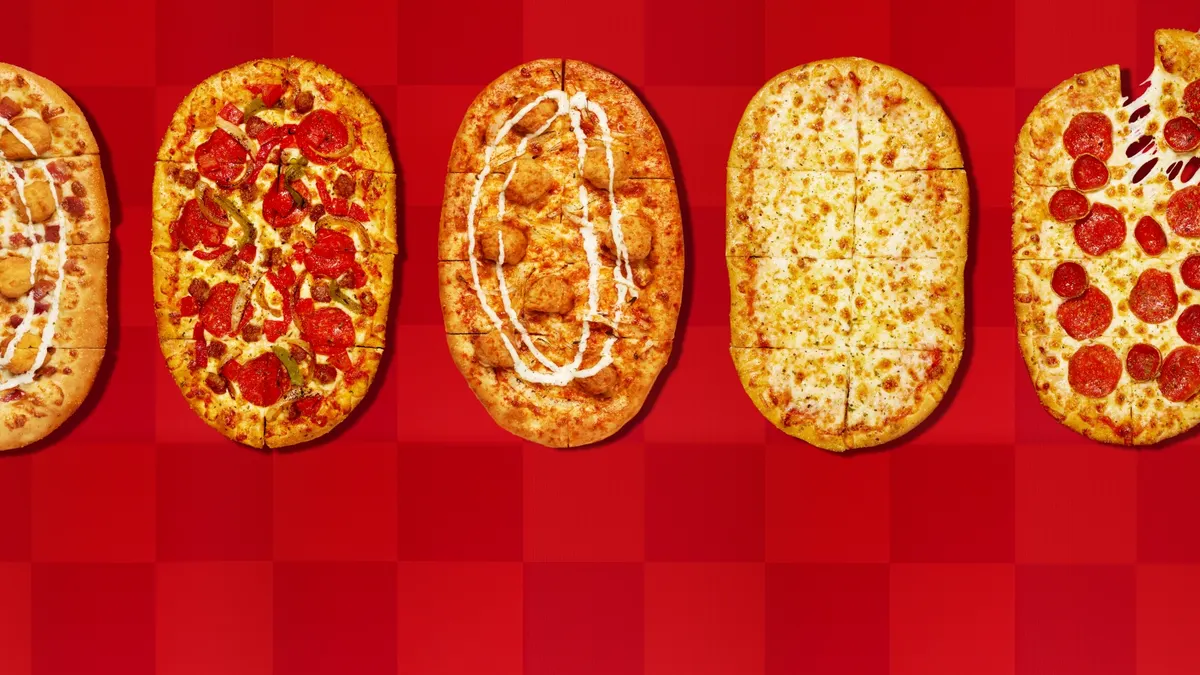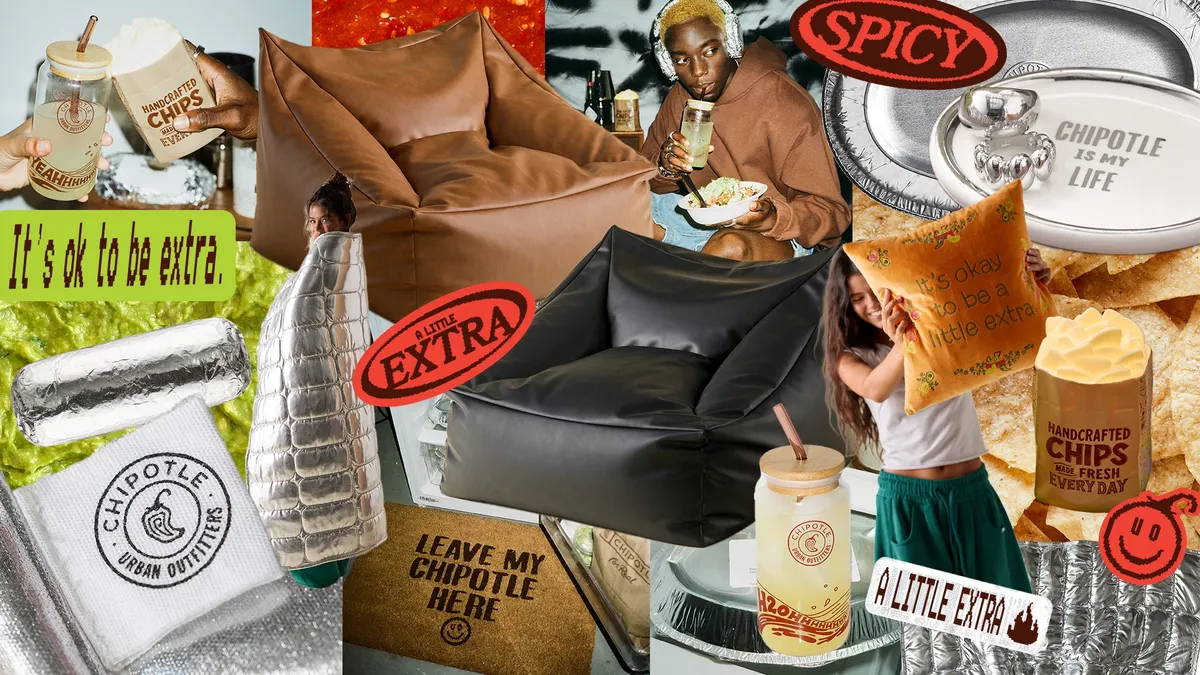Tucked away at the base of the rolling Blue Ridge Mountains in central Virginia sits a rather unassuming 92.5-acre entertainment oasis built around its star performer, beer.
With roads, rivers and trails nearby, Devils Backbone has become a destination for bikers, daytrippers, vacationers, canoers and hikers. The grounds are adorned with camper tents, an expansive parking lot for recreational vehicles, a fire pit with rows of Adirondack chairs lining its circumference, a cigar bar, a brewpub, a distillery and, of course, beers, with more than two dozen on tap at any one time across the sprawling complex.
"Look at this place, there is no place quite like it. It's a little wonderland. It's a little paradise," Jason Oliver, brewmaster at Devils Backbone, who has created popular brews like Vienna Lager, Trail Angel Weiss and Eight Point IPA. "It’s an absolutely gorgeous place to come work and to come play.”
Each year, Devils Backbone holds 5K races, has yappy hours for dogs (treats are made with spent grains left over from the brewing process), mixology classes, a beer club and countless music festivals, with the crowning event coming in late September when 3,000 people pack into the venue for a three-day music festival called Hoopla.
It's all part of an effort by the brewer — a division of AB InBev's burgeoning craft brew empire — to stand out amid an increasingly competitive marketplace where thousands of beers compete to line U.S. shelves and drinkers are increasingly gravitating toward wine, spirits and Mexican imports such as Corona and Modelo Especial.
The popularity of U.S. brewpubs and taprooms — defined as craft and excluding those operated by major brewers — have soared in popularity, nearly tripling in number from 2,323 in 2012 to 6,064 in 2017, according to the most recent data from the Brewers Association. Brewpubs are generally defined as having a restaurant embedded in the establishment, but increasingly taprooms are blurring that definition by offering a limited food menu or having food trucks serving hamburgers, fries, pizza and hot dogs.
Increasingly, Big Beer has gotten into the space. The Beverage Marketing Corporation said AB InBev is operating 40 of its own taprooms under the 10 craft brands like Devils Backbone that it has acquired since 2011. MillerCoors has 11 (six of them under the four craft brands it has purchased since 2012).
Heineken, as part of its investment in Lagunitas Brewing, and Constellation Brands, each own or are involved with eight. And Guinness opened its first U.S. brewery since 1954 in Halethorpe, Maryland, near Baltimore, in August. It's equipped with a 250-person taproom, a 270-seat restaurant and 90 beers — nearly all of them created in-house.
Anheuser-Busch declined to outline its strategy with taprooms except to say in a statement that they "are a great way to engage directly with consumers, build brands and gain insights on emerging trends and innovations." MillerCoors and Constellation Brands could not be reached for comment.
Changing perceptions, dispelling myths
For Guinness, one of the world's most recognizable brewers, the decision to spend $90 million to refurbish a former distillery in Maryland is largely a direct response to the rapid growth of craft beer. The Ireland-based company, which is part of spirits giant Diageo, now has a deeper foothold in the U.S and can be more agile in developing, testing and marketing its beers directly to the American consumer.
Long synonymous for its signature creamy, dark Guinness Draught Stout, employees at the 62-acre operation have worked to dispel the perception of the company as a single beer. They have focused their work on creating smaller batches of brews for patrons made with ingredients such as real vanilla beans, the outer shell of the coffee fruit or fresh fruit such as apricot and plum.
"We're always going to rely on our core beers, on our heritage, on our beers from Dublin, but what American craft beer drinkers have made clear is that if you want to keep them engaged you have to give them something new and different," Ryan Wagner, Guinness' brewery ambassador at the Maryland location, told Food Dive. "This is in many ways about changing perception. This is dispelling myths. ... People think of Guinness as a beer; it's very hard to convince them that we're a brewer."
So far it appears to be working. While Guinness Draught Stout, which is still brewed and imported from the St. James's Gate Brewery in Dublin, and Guinness Blonde, made in Maryland, are its top two sellers, they're only responsible for roughly a quarter of its beer sales.
"We're always going to rely on our core beers, on our heritage, on our beers from Dublin, but what American craft beer drinkers have made clear is that if you want to keep them engaged you have to give them something new and different."

Ryan Wagner
Guinness brewery ambassador
Wagner said the majority of the 150,000 people that have visited the Guinness Open Gate Brewery and Barrel House and purchased a beer since its opening initially consumed one of the classic brews before branching out and trying some of the innovative options unique to the location; new beers are added to the lineup every few weeks and brewers are encouraged to experiment. Beers with strong sales could eventually be sold outside the brewery in neighboring cities such as Baltimore, Philadelphia and Washington, D.C., and potentially taken national.
"What it gives us is the ability to do a test market," Wagner said. "When people come in here they ask all the time, 'What's going to be the next beer that we'll see at our liquor store or bars around the world.' The answer we give is, 'You're going to tell us.'"
It's a practice that mirrors a strategy used by craft breweries, and is a major reason why they have been so successful in disrupting the beer industry. In assembling the brewing team at the new location, Guinness chose not to bring people over from its 260-year old location in Dublin, and instead hired them from top craft breweries across the U.S., Wagner said.
"The people that run Guinness, and the people that have always run Guinness, are smart enough to know that they don't know everything," he said. "So (we're) learning lessons from breweries around the world and learning lessons from the American craft beer industry."
'Kick back and have a good beer'
In an industry where more than 6,000 craft beers are now flooding the space, brewpubs and taprooms have become a way for brewers to stand out and differentiate themselves. Their success is not only tied to trendy, tasty and cleverly named brews but the immersive experience they create through food, entertainment and rich knowledge of the products by employees.
"If they didn't have good food, we probably wouldn't be here as much. If they didn't have good beer ... it's just like everything fits together," said Lisa Flood, who came to Devils Backbone with her family, including her 10-year-old son. "And being out here with the bright blue skies and beautiful scenery, it's just a relaxed place to kick back and have a good beer and good food and good atmosphere."
Heidi Crandall, who co-founded Devils Backbone in 2008 with her husband before selling it to AB InBev eight years later, told Food Dive the global beer giant has given the craft brewer access to "more resources than we could have ever dreamed up."
The extra capital has helped build the campgrounds, a new headquarters and the spirits operation, among other improvements. It's also allowed Devils Backbone to tap into AB InBev's deep bench of knowledge and industry connections, many of them within the company itself, and to talk to other brewers about ingredients, recipes, trends and quality control. Oliver, Devils Backbone's brewmaster, recently went to Africa with a group from AB InBev for hops research.
Devils Backbone is hardly the only source for an adult beverage in Virginia, let alone the rural part of the state where it operates. A few miles up the road are a craft cider company, a distillery, a pair of smaller breweries and a handful of wineries.
"It's highly competitive, and I think if you sit back like any business, and you're not proactive, you get into trouble," Crandall said. "We're always focused on the next level, where we can go next and what's the next new thing we can come up with."
Erik Gordon, a business professor at the University of Michigan who estimated he has five or six brewpubs within a 15-minute walk of his office in Ann Arbor, told Food Dive the establishments are another way for beer companies to stoke margins and contribute to profitability.
Nathan Greene, analyst at the Beverage Marketing Corporation, estimated a case of beer (two dozen 12-ounce bottles) sold to consumers directly by a brewpub, for example, could go for roughly $50. That same item purchased by a distributor might go for $21 before the distributor marks it up and then sells it to the retailer, which does the same. For the brewpub, selling beer directly to the consumer could result in a 138% jump in revenue.
"It's not a slam dunk. In most places, it's not enough to just be a brewpub."

Erik Gordon
Business professor, University of Michigan
But as more of these venues populate cities and towns, being a brewpub is not enough to guarantee success. The impetus is on each brewpub or taproom to serve distinctive beers and have the right mix of decor, entertainment, atmosphere and food to stand out and keep consumers coming back despite the temptation of other nearby drinking options to chose from.
"It's not a slam dunk. In most places, it's not enough to just be a brewpub," Gordon said.
He noted that 20 years ago if a town had a brewpub it was a big deal, showing the place had status, was cool and really made it — much like cities experienced during Hard Rock's heyday if they had one of the themed restaurants in their backyard.
"I remember when I used to travel and the hosts, if they had a brewpub, they would think it was special and they would make a big deal about seeing their brewpub," he said. "Brewpubs have become common enough, and they might take you to the brewpub just because that’s a fun place to go, but they don’t excitedly tell you that we have this coolest thing."
The venues, and the experience they work to cultivate, extend beyond the establishment as consumers are more likely to purchase the beer later on at the grocery store or to ask for it on tap, if it's not already there, at their favorite bar or restaurant. In a crowed beer market, those bonds can reap lucrative financial benefits.
Elaine Peelen, who stopped at Devils Backbone with her daughter as part of a girls' weekend, said the brewpub experience allowed them to sample a variety of beers, some of which they may never have tried before, while honing in on their favorite brews. "That way when you go to the store you are able to select, be more informed," she said. "You've tasted it here and so you're on the lookout for it."
Consolidation is looming
In some areas, brewpubs and taprooms have thrived as they tap into the popular craft beer scene while at the same time siphoning off a portion of sales once relegated to traditional bars, Greene said. But he noted that in other regions too many of them have left a climate ripe for consolidation, especially in smaller towns where an oversaturation of locations could squeeze those operations that struggle to evolve.
Recent data indicated the number of breweries in the U.S. rose in 2018 to roughly 7,000 with another 2,200 in planning or construction, Greene noted. While some may never actually end up opening, the influx of more establishments will inevitably place further pressure on the industry and could lead to an acceleration of closures in the coming years, he said.
In Asheville, the western North Carolina tourist destination is home to roughly 91,000 people, but has 43 brewery locations and taprooms including Sierra Nevada, which built its second production facility there, and AB InBev-owned Wicked Weed.
Breweries in the area have started to feel the pressure of the mounting competition. Highland Brewing, the first brewery in the city, rebranded in 2018 after watching volumes slip for a few years, and so far it appears to be turning its business around. Lexington Avenue Brewery in downtown Asheville closed last month, but the location won't be without beer for long. It will soon be home to a collection of craft breweries, along with a new restaurant and brewpub.
"Those brewpubs that aren't keeping up with the trend will not succeed because there is already somebody doing it better in their region," Greene said. "It is also very locally tied ... so it really doesn't matter what is happening outside of your home region."
With thousands of beer manufacturers across the country, a common tactic among the smaller players is to focus on dominating a local market, and incorporating a brewpub or taproom is often key to that strategy. In Philadelphia, Yards Brewing, the maker of Chocolate Love Stout, Jefferson's Golden Ale and Philadelphia Pale Ale, sells its beers in four states — New Jersey, Delaware, Pennsylvania and Maryland.
"We're a mid-Atlantic brewery that wants to be Philadelphia's No. 1 beer," Frank McLaughlin, general manager of the taproom at Yards Brewing, told Food Dive. "Who cares about (our) Philly Pale Ale in California? There are just too many beers. There is a regional quality to beers that I think is just so important."
Yards recently doled out $20 million to overhaul a former 70,000-square foot Destination Maternity store not far from the city's iconic Liberty Bell, doubling the brewery's size from its prior location just a mile away. The newfound space has enabled the 25-year-old company to more than triple its annual beer production to between 200,000 and 300,000 barrels, offer more beers on tap — 40 compared to 14 at the old location — and expand its menu offerings.
"The more money the taproom brings in the easier it is for the rest of the business because the competitive market down the street right now is so competitive with six-pack and offsite sales (at bars and pubs). Selling your product in-house is where you are making your best profit."

Frank McLaughlin
Taproom general manager, Yards Brewing
At its old taproom, Yards Brewing would shutter its tiny kitchen on the weekend (its grill was big enough to handle only six grilled cheeses at one time, for example) and bring in food trucks to serve customers. Today, it has a chef with fine-dining experience overseeing a menu that includes traditional pub must-haves of hamburgers and BBQ as well as normal food with a twist, such as lamb risotto and duck nachos.
These offerings, from the food to the beer, has increased customer traffic to Yards Brewing from an estimated 1,500 patrons a week to more than 6,000 — boosting the exposure the brewer gets to its product through the in-store experience and helping the company's revenue. After two consecutive years of flat to slightly higher sales, revenue was up in 2018 due largely to the taproom.
"The more money the taproom brings in the easier it is for the rest of the business because the competitive market down the street right now is so competitive with six-pack and offsite sales (at bars and pubs)," McLaughlin said. "Selling your product in-house is where you are making your best profit."
But Yards Brewing also is cognizant of the growing competition in brewpubs and taprooms. McLaughlin said in 2014 there were three or four in the city, and today that total has exploded to 20 locations within the city limits. The growth is predominately tied to the popularity of craft beer and the cheaper cost for licenses of beer compared to liquor, he said.
To foster a memorable experience, and increase the likelihood that its beer will stand out on packed shelves and taps when consumers leave the taproom, new hires at Yards Brewing are trained to know everything about beer, including the brewing process and the ingredients of each product, as well as the history of the company. They go to "school" every two weeks where classes can include a new beer recipe, a discussion on hops or a taste test of a certain style of beer. Employees are given monthly tests on beer or food.
Yards Brewing is careful about venturing into the same activities and promotions that make places like Devils Backbone in Virginia so successful. While it has dozens of beers to chose from, it is reticent to offer things like half-prized happy hour, brunch, or selling its cold six packs at a lower price point than nearby competitors.
The reason? A store across the street sells its beer, and three of its best accounts, all within walking distance, offer brunch to its customers. To curry favor with local bars, patrons at Yards Brewing who purchase a meal and a few beers at its taproom get a special voucher to visit one of the nearby places for a free beer.
As Philadelphia has been infiltrated with brewpubs and taprooms, McLaughlin said that while they are competitors, the businesses haven't lost sight of the fact that they all have a common goal: selling good beer. Breweries will recommend another venue to a customer to grab a drink, borrow ingredients such as hops from each other and sometimes meet for lunch. It's also common for a new brewery to invite its competitors to the grand opening.
"It's the community we are. That's what beer is. You compete against each other but you like each other. We're not ever going to bad mouth someone else's beer," McLaughlin said. "People are going come to the city and drink beer. They're going to come to many different breweries. All we can do is control our product and their experience here."








